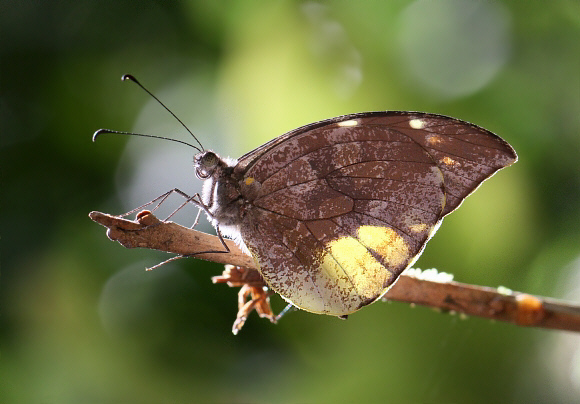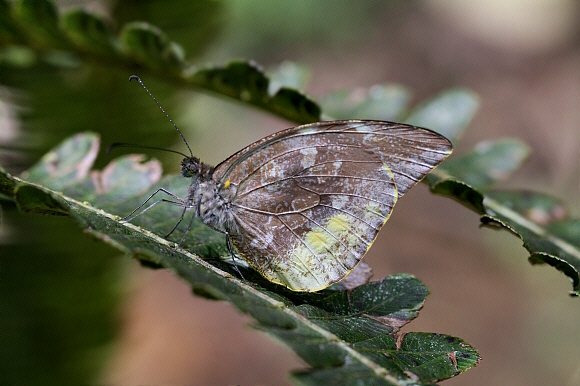
Introduction
The Dismorphiinae is a small subfamily which includes the Wood Whites of Europe, and about 50 neotropical species. Features common to all Dismorphiine genera include the slightly tapered and down-curved antennae, long thin abdomens, narrow forewings, and hindwings that are noticeably greater in area than the forewings.
In several Dismorphiine genera sexual dimorphism is very pronounced – with females looking like fairly typical Pierids, while the males are often patterned in orange and black, and closely resemble the ‘tiger complex’ Ithomiines. The naturalist Henry Walter Bates observed this phenomenon and postulated the theory that the non-toxic males had evolved to become mimics of toxic Ithomiines – a theory now known as Batesian mimicry.
The genus Lieinix ( formerly included in Dismorphia ) was erected to include 6 species which are characterised by having narrow falcate forewings, and slightly glossy mottled brownish undersides.
Lieinix nemesis is sexually dimorphic – the upper surface of the male’s forewings are black, spotted with creamy white. The female’s forewings are white with a black apical area and a black streak across the discal cell.
This species is distributed from Mexico to Peru.

Habitats
This species is found in mid-elevation primary and secondary cloudforest habitats, from about 600-1800m above sea level.

Lifecycle
The eggs are pale yellow, and laid singly on young leaves of Inga ( Mimosaceae ). The fully grown larva is dark green and covered with short downy ‘hair’. The pupa is green, with bowed wing-cases and a strongly tapered head. It projects at an angle of about 45 degrees from a stem, attached by the cremaster, and supported by a silk girdle.
Adult behaviour
Males are usually encountered in one’s or two’s, imbibing dissolved minerals from damp ground, and are strongly attracted to urine or sunlit patches of damp rotting leaf litter. They are quite docile in behaviour – if disturbed they meander about for a few moments, fluttering slowly just above the surface of the ground, but soon resettle, usually within a few metres of their original feeding station.
Females are seen much less frequently, but can sometimes be found searching for oviposition sites at light gaps in the forest. On misty days they can sometimes be found at rest on the foliage of tall bushes in forest edge habitats.

